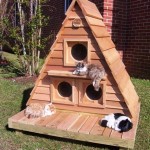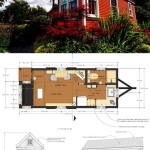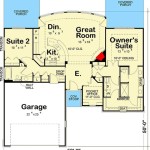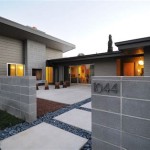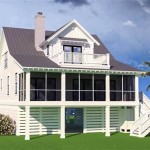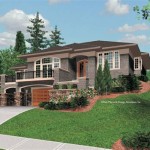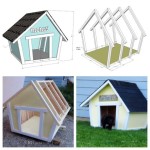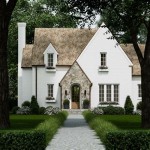Wood Duck House Plans are detailed blueprints or instructions that provide guidance for constructing a nesting box specifically designed to attract and support nesting Wood Ducks. These structures, often placed over water or in trees, offer essential shelter and protection for Wood Duck broods during their breeding season.
Wood Ducks, known for their striking plumage and unique nesting habits, rely heavily on artificial nest boxes due to habitat loss and natural cavity scarcity. Wood Duck House Plans provide detailed specifications, including materials, dimensions, and assembly instructions, ensuring that the nest box meets the specific needs of this waterfowl species. The availability of well-designed Wood Duck House Plans plays a vital role in supporting the conservation and population of these beloved birds.
In this article, we will delve into the specifics of Wood Duck House Plans, exploring their importance, providing step-by-step instructions, and discussing best practices for successful nest box placement and maintenance.
Wood Duck House Plans: 9 Important Points
- Specific dimensions for optimal nesting space
- Durable materials for longevity and weather resistance
- Proper drainage to prevent water accumulation
- Predator guards to deter raccoons and other threats
- Appropriate placement over water or in trees
- Clear entry hole size to accommodate Wood Ducks
- Rough interior to aid ducklings in climbing
- Annual cleaning and maintenance for hygiene
- Monitoring for successful nesting and brood health
By adhering to these guidelines, Wood Duck House Plans contribute to the conservation and well-being of these fascinating birds.
Specific dimensions for optimal nesting space
When designing a Wood Duck House, it is crucial to adhere to specific dimensions to ensure a suitable nesting space for the birds. The internal dimensions of the nest box should provide ample room for the Wood Duck hen to comfortably incubate her eggs and care for her brood. The following dimensions are recommended:
Floor dimensions: The floor of the nest box should measure approximately 10 inches by 10 inches (25 cm by 25 cm). This provides sufficient space for the hen to move around and arrange her nest material.
Nest box height: The height of the nest box from the floor to the ceiling should be around 24 inches (60 cm). This allows the hen to stand upright and have enough headroom to enter and exit the box without difficulty.
Entry hole dimensions: The entry hole should be placed in the center of one of the side walls, approximately 4 inches (10 cm) above the floor. The diameter of the hole should be around 3 inches (7.5 cm), which is large enough for the hen to enter but small enough to deter predators.
Overall dimensions: The overall dimensions of the nest box should be approximately 12 inches wide, 12 inches deep, and 26 inches high (30 cm wide, 30 cm deep, and 65 cm high). These dimensions provide a compact and cozy nesting space for the Wood Ducks while ensuring adequate ventilation and drainage.
Durable materials for longevity and weather resistance
When selecting materials for your Wood Duck House, durability and weather resistance are of utmost importance. The nest box will be exposed to various elements, including rain, sun, and wind, so it is crucial to choose materials that can withstand these conditions and ensure the longevity of the structure.
- Cedar or cypress wood: These woods are naturally resistant to rot, decay, and insects, making them ideal for outdoor use. They are also relatively lightweight and easy to work with, making them a popular choice for Wood Duck House construction.
- Plastic lumber: Made from recycled plastic, this material is impervious to rot and decay and can withstand extreme weather conditions. It is also low-maintenance and easy to clean, making it a practical choice for nest boxes.
- Exterior-grade plywood: Plywood is a durable and affordable option for Wood Duck Houses. However, it is important to choose exterior-grade plywood that is specifically designed to withstand outdoor use and moisture.
- Metal: While less commonly used, metal can be a durable material for Wood Duck Houses. It is resistant to rot, decay, and insects, but it can be more challenging to work with and may require specialized tools.
Regardless of the material you choose, ensure it is of high quality and free from defects. Using durable and weather-resistant materials will ensure that your Wood Duck House lasts for many years, providing a safe and secure nesting site for generations of Wood Ducks.
Proper drainage to prevent water accumulation
Ensuring proper drainage is essential in Wood Duck House design to prevent water accumulation, which can lead to mold, rot, and other issues that compromise the health and safety of nesting Wood Ducks.
- Sloped floor: The floor of the nest box should be sloped slightly downwards towards the entrance hole. This allows water to drain out of the box, preventing it from pooling and causing dampness.
- Drainage holes: Drill small drainage holes in the bottom corners of the nest box, just above the floor. These holes allow excess water to escape, further preventing water accumulation.
- Ventilation holes: In addition to drainage holes, ventilation holes should be placed near the top of the nest box. These holes allow air to circulate and help prevent condensation from forming inside the box.
- Avoid placing the nest box directly on the ground: Position the nest box on a post or platform above the ground. This prevents water from seeping into the box from below and ensures proper drainage.
By incorporating these drainage features into your Wood Duck House design, you can help ensure that the nest box remains dry and comfortable for nesting Wood Ducks, reducing the risk of health problems and increasing the chances of successful nesting.
Predator guards to deter raccoons and other threats
Protecting Wood Duck nest boxes from predators is crucial for the safety and success of nesting Wood Ducks. Various predator guards can be incorporated into the design to deter raccoons, squirrels, snakes, and other potential threats.
- Baffles: A baffle is a device placed below the entrance hole to prevent predators from reaching inside the nest box. It can be made from wood, metal, or plastic and should be large enough to cover the entire area beneath the entrance hole.
- Predator cones: Predator cones are cone-shaped devices that fit over the entrance hole, making it difficult for predators to enter. They are typically made from metal or plastic and have a narrow opening that allows Wood Ducks to enter and exit but deters larger predators.
- Perches: Perches placed near the entrance hole provide a resting spot for Wood Ducks while deterring predators from lingering near the nest box. Perches should be placed so that predators cannot use them to climb up to the entrance hole.
- Slippery surfaces: Applying a slippery surface, such as petroleum jelly or cooking oil, around the outside of the nest box can make it difficult for predators to climb up the sides.
By incorporating predator guards into your Wood Duck House design, you can help protect nesting Wood Ducks from predators, increasing their chances of successfully raising their young.
Appropriate placement over water or in trees
The placement of Wood Duck Houses is crucial for their successful use and the safety of nesting Wood Ducks. These nest boxes should be placed in areas that provide easy access to water and offer protection from predators and adverse weather conditions.
- Over water: Wood Duck Houses can be placed over water bodies such as ponds, lakes, or rivers. This provides easy access to water for the ducklings, allowing them to enter and exit the nest box quickly. When placing the nest box over water, ensure it is high enough above the water level to prevent flooding during high water conditions.
- In trees: Wood Duck Houses can also be placed in trees, providing protection from predators and offering a sense of security for nesting Wood Ducks. When placing the nest box in a tree, choose a tree with a sturdy trunk and branches. The nest box should be placed high enough above the ground to deter predators and out of the reach of children and pets.
- Proximity to natural cover: Regardless of whether the nest box is placed over water or in a tree, it should be situated near natural cover, such as overhanging branches, dense vegetation, or fallen logs. This provides additional protection for nesting Wood Ducks and their young from predators and the elements.
- Avoid open areas: Wood Duck Houses should not be placed in open areas or near human activity. These areas are more exposed to predators and disturbances, which can stress nesting Wood Ducks and increase the risk of nest failure.
By carefully considering the placement of Wood Duck Houses, you can help ensure the safety and success of nesting Wood Ducks, increasing the chances of successful breeding and population growth.
Clear entry hole size to accommodate Wood Ducks
The entry hole of a Wood Duck House is a crucial aspect that directly affects the accessibility and safety of the nesting site for Wood Ducks. The size and shape of the entry hole should be carefully considered to ensure that adult Wood Ducks can easily enter and exit the nest box while deterring predators and preventing unwanted guests.
The recommended diameter for the entry hole of a Wood Duck House is 3 inches (7.6 cm). This size allows adult Wood Ducks to comfortably enter and exit the nest box without difficulty. The hole should be circular in shape to prevent predators from getting a grip on the edges and enlarging the hole. It should be placed in the center of one of the side walls, approximately 4 inches (10 cm) above the floor of the nest box.
To further deter predators, the entry hole can be fitted with a predator guard. This can be a simple piece of sheet metal or plastic that covers the outside of the entry hole, leaving only a small opening for Wood Ducks to enter. Predator guards make it more difficult for raccoons and other predators to reach inside the nest box and attack the nesting Wood Ducks or their eggs.
It is important to avoid making the entry hole too large, as this can compromise the safety of the nest. A larger hole can make it easier for predators to enter the nest box, increasing the risk of nest predation. Additionally, a large hole can allow cold air and drafts to enter the nest box, which can be harmful to the ducklings.
By carefully considering the size and shape of the entry hole, you can help ensure that your Wood Duck House is accessible to Wood Ducks while deterring predators and creating a safe and secure nesting environment.
Rough interior to aid ducklings in climbing
The interior of a Wood Duck House should have a rough surface to aid ducklings in climbing out of the nest box once they hatch. Newly hatched Wood Ducks are unable to fly, and they rely on their sharp claws and the rough interior of the nest box to climb up the walls and reach the entrance hole. A smooth interior can make it difficult for ducklings to climb, potentially leading to them becoming trapped inside the nest box.
To create a rough interior, you can use a variety of materials, such as wood shavings, sawdust, or astroturf. Wood shavings and sawdust are natural materials that provide good traction for ducklings. Astroturf is a synthetic material that is often used in sports fields. It is durable and provides a rough surface that is easy for ducklings to climb on.
When adding a rough interior to your Wood Duck House, be sure to avoid using materials that are sharp or could injure the ducklings. Also, avoid using materials that are treated with chemicals, as these could be harmful to the ducklings.
Providing a rough interior in your Wood Duck House is an important step to ensure the safety and success of nesting Wood Ducks. It allows the ducklings to easily climb out of the nest box and begin their journey to the water.
Annual cleaning and maintenance for hygiene
Maintaining proper hygiene in Wood Duck Houses is essential for the health and well-being of nesting Wood Ducks and their offspring. Regular cleaning and maintenance help prevent the buildup of bacteria, parasites, and debris that can compromise the health of the birds. It is recommended to perform a thorough cleaning of Wood Duck Houses annually, ideally after the nesting season has ended.
The first step in cleaning a Wood Duck House is to remove all nesting material and debris. This includes any straw, wood shavings, or other materials that the Wood Ducks have used to build their nest. Once the nesting material has been removed, the interior of the nest box should be scrubbed with a mild soap and water solution. Be sure to rinse the nest box thoroughly to remove any soap residue. Allow the nest box to dry completely before replacing any nesting material.
In addition to annual cleaning, it is important to regularly inspect Wood Duck Houses for any signs of damage or wear and tear. This includes checking for holes, cracks, or loose screws. Any damage should be repaired promptly to prevent predators from entering the nest box or the nest box from falling apart. It is also important to check the predator guards and baffles to ensure they are in good condition and functioning properly.
By performing annual cleaning and maintenance on Wood Duck Houses, you can help ensure that these structures provide a safe and healthy nesting environment for Wood Ducks. Regular maintenance can extend the lifespan of the nest box and help to improve the nesting success of Wood Ducks.
Monitoring for successful nesting and brood health
Regular monitoring of Wood Duck Houses is crucial to assess nesting success and ensure the health and well-being of the ducklings. Here are some key aspects to consider when monitoring Wood Duck Houses:
Checking for signs of nesting activity: Once Wood Duck Houses are installed, it is important to monitor them regularly for signs of nesting activity. This includes observing the nest boxes for Wood Ducks entering and exiting, as well as checking for nesting material inside the boxes. If you notice Wood Ducks nesting in a particular box, it is important to minimize disturbance to avoid stressing the nesting female.
Monitoring egg laying and hatching: Once a Wood Duck has begun nesting, you can monitor the progress of egg-laying and hatching by carefully checking the nest box. Avoid handling the eggs or disturbing the nest, as this can cause the Wood Duck to abandon her nest. Instead, observe the nest box from a distance using binoculars or a spotting scope.
Observing duckling growth and development: Once the eggs have hatched, you can continue to monitor the nest box to observe the growth and development of the ducklings. Note the number of ducklings that hatch and their overall health and activity levels. If you notice any signs of distress or illness among the ducklings, it is important to contact a wildlife rehabilitator for assistance.
Assessing nesting success: After the ducklings have fledged and left the nest box, you can assess the nesting success by examining the nest box and the surrounding area. Count the number of eggshells or unhatched eggs to determine the number of eggs that were laid. Look for signs of predation, such as broken eggshells or feathers, to determine if any eggs or ducklings were lost to predators.
By regularly monitoring Wood Duck Houses and observing nesting activity, you can gain valuable insights into the nesting success and brood health of Wood Ducks. This information can be used to improve the design and placement of nest boxes and to identify potential threats to nesting Wood Ducks.









Related Posts

